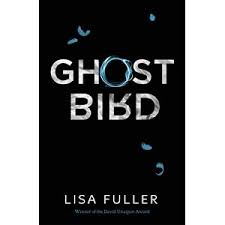Author Lisa Fuller has won many awards and fellowships, including the 2017 David Unaipon Award for an Unpublished Indigenous Writer for her Young Adult novel Ghost Bird (UQP 2019). Ghost Bird depicts pragmatic and authentic modern life, featuring indigenous characters, combined with what I (from my white perspective) am tempted to call ‘magic realism’ but in reality is so much more than that – it is a mysterious and ghostly thread to this tale that relies on Aboriginal myth and legend, traditional Elder knowledge and community and cultural beliefs.
The story is narrated by adolescent Stacey. She and her twin sister, Laney, are almost identical in appearance but very different in personality. When Laney disappears one night in suspicious circumstances, Stacey cannot believe she has left of her own accord without telling her. The girls’ extended family begin the search, mob coming from everywhere to assist. But Stacey experiences dark and disturbing dreams that she cannot explain, and as more information comes to light about Laney’s last movements, it is feared that she has disobeyed ancient lore and trespassed onto dangerous territory. Whether this danger comes from the local white racists or from angry Aboriginal spirits, nobody can tell. But Stacey is the only one who can save her sister, and she must make some unexpected alliances and seek support from unlikely people in her quest.
Ghost Bird is tense, atmospheric and spooky. The reality of the twins’ day-to-day lives is punctuated by sinister dream sequences and creepy scenarios and we are unsure if they are real or imagined.
This is a perfect example of an ‘own voices’ story. Fuller depicts Aboriginal culture and family life from her real-life perspective. The language, in particular, is a rich and engaging patois that rolls easily off the page and is sustained throughout the entire novel. There is never any question that this is a black woman writing about a black community. And yet the story will appeal to teenagers of all stripes – the loyalty and fighting between sisters and family, the conflict between parents and adolescents about what they do and when and with whom, the gripping mystery of a young girl lost and her family’s desperation to find her, and the uneasy and unsettling sense of something evil or menacing just beyond the circle of light, ready at any moment to pounce on the unsuspecting. The story touches on all the expected YA themes of young love, self-identity, separation from family, bullying, familial expectations and self-doubt, themes with which all adolescent readers will identify. With a wry sense of humour (especially from the twins’ mother – a great character), this book will appeal to a broad range of readers and leave them wondering what on earth actually happened.

